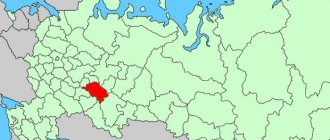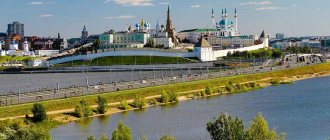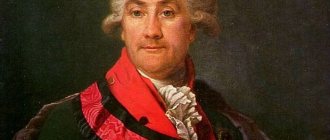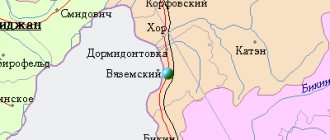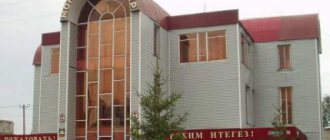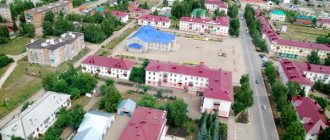Tourists often call Chistopol an “open-air museum.” Chistopol is located on the picturesque left bank of the Kama, about 140 kilometers from Kazana. In the former merchant city, historical buildings are still preserved, in which ancient mansions of wealthy citizens and Orthodox churches occupy an important place. One of them, the white stone Cathedral of St. Nicholas the Wonderworker, is rightfully considered the architectural dominant and symbol of the city.
The concept of “Clean Field”, which gave the city its name, was not born in these parts by chance. Archaeologists find settlements of ancient Bulgars here, and the village of Arkhangelskaya Sloboda, often called Clean Field, was mentioned in written sources already at the end of the 17th - beginning of the 18th century.
The village on the site of the future Chistopol was founded by serf peasants from among the fugitives who settled here en masse, then the schismatics exiled here joined them. They were going to organize a free settlement of co-religionists on the banks of the Kama. The first inhabitants called their new homeland Clean Field, since it was the empty fields and forests that first appeared before their eyes. At first, residents lived by hunting and fishing, but agriculture also quickly developed.
However, the lands here were state-owned, and the state was not going to put up with their unauthorized seizure, to which for the time being it turned a blind eye. The tsarist troops who arrived here destroyed and burned the settlement of the fugitives, leaving the same original “open field” in place of the village. New residents soon began to settle in - the sovereign's peasants sent here. The settlement was rebuilt again along with the former fugitives, who, for various reasons, survived the punitive expedition and avoided further exile. In the middle of the 18th century, a village already existed here again, even larger than before, and its inhabitants preferred to engage mainly in trade.
According to the census, by 1761 the number of residents of Chisty Pole exceeded a thousand people. Twenty years later, by decree of Empress Catherine II, the village was given the status of a district town of the Kazan governorate (since 1796 - a province). The newly created city began to be called Chistopol.
General information and economics
Chistopol is a city of regional significance, the center of the Chistopol district of the Republic of Tatarstan. It is located 135 km southeast of Kazan. The city is located on the left bank of the river. Kama, in the area of the Kuibyshev reservoir. The nearest major railway runs 125 km to the north (Nurlat station).
The city's population is not very large: in Russia the city ranks 272nd in terms of the number of inhabitants. At the moment, 61 thousand people are registered in it. The sights of Chistopol, described in this article, are an important component of life.
The city's economy is connected with the activities of industrial enterprises. There are maintenance plants and food industry enterprises (meat, fish, dairy, bakery). A large number of plants and factories determine the employment structure of the local population: most citizens work in production.
Becoming Chistopol a district town
From now on, Chistopol became a district town, and this title implied the mandatory presence of a representative Orthodox cathedral in it.
Three years - that’s exactly how long it took to finally confirm the status of Chistopol as a district Russian city with the construction of a magnificent white-stone cathedral on the high bank of the wide and deep Kama. The three-altar brick cathedral in the name of St. Nicholas of Myra was designed in the traditions of Russian classicism.
The construction of a large cathedral required considerable funds. The money was donated by Chistopol merchants and entrepreneurs known for their charitable activities.
Climatic conditions
The climate of the city is moderately cold, continental, typical of the eastern part of the European Plain. The average annual temperature is about + 4 degrees, the annual precipitation is about 550 mm. The minimum amount of precipitation occurs in March (26 mm), the maximum in July (72 mm). The coldest month is January (-13°C), the warmest month is July (up to +20°C).
Climatic and soil conditions are favorable for the cultivation of many crops, with the exception of heat-loving ones.
Yuri Kondrashin
There are well-known pre-revolutionary photographs of Chistopol (mostly in the form of postcards). Here is a rarely seen photograph (card again) of the mills:
Mill Square long before 40 Let Pobeda Street appeared. I remember that in the early 60s there were still mills. True, they are no longer windy. Photo from the 1910s:
And a very rare photo of the Church of the Savior Image Not Made by Hands (pictured in the 1920s) Or, in everyday life, the Church of the Savior. Built in 1804 on the site of the wooden Archangel Michael Church, the oldest in the city. Closed and demolished in the 1930s. Now in this place there is a square and a monument to Lenin (see comments):
To give a clearer picture, here is also a view of the Spasskaya Church from the side of the “Books” store (this is a popular and famous photo):
We have such a street - Teatralnaya. Short. Near the Park. Why - Teatralnaya? If there is not a single House of Culture or Theater nearby. So, previously there was a Theater building on this street. Wooden. The theater occupied part of the park, and its façade faced the street. Almost opposite the building where we do all sorts of x-rays. A little closer to K. Marx only. I only have a drawing, unfortunately. Maybe someone has a photo?
Description of the Chistopol Assumption Convent. From the book of 1869 - “Review of Orthodox monasteries in Russia”:
(source):
(source):
The surviving buildings to this day are the monastery refectory :
cell building:
Photo postcard from 1916. Very rarely published. st. Count Leo Tolstoy (the shooting point is just below the House of Public Services). View towards the Spasskaya Church (Lenin Street, that is):
For comparison, here is an already well-known and popular photograph with a view of the Church of the Savior:
The Red Church - or the Church of the Icon of the Mother of God of Kazan - was built in 1900 - 1909. at the entrance to the city along the Kazansky tract. Now this is the street. Engels. It was demolished in 1933-34. Only the former candle shop, Engelsa, 40 (or 38?), which stood nearby, has survived. Today there is a spare parts store there:
I only have this nondescript photograph of the church itself and a reconstruction drawing by Evgeniy Skorokhodov:
On the map of the Russian Empire in 1745, Chistopol is designated as Clean Field. The 1745 map was compiled by the French cartographer Joseph Nicolas Delisle, specially invited by the Academy of Sciences for this purpose. But due to failure to receive the promised help, Delisle quarreled with the Academy and in 1745 published the map he compiled in German:
And the Academy of Sciences in the same year re-published Delisle’s map (but already colored) without indicating the name of the compiler. By the way, I reprinted it with many errors - for example, Staro Szesz Minsk in the original, and in the Russian version - Staro Minsk:
Old Chistopol (from the rare series). View of the street Catherine (K. Marx) from the Kama side. On the left is the Chukashev estate (or Pedagogical College). Photo from the early 1900s:
(source):
Postcard with a view of the city of Chistopol, 1906:
From the last quarter of the 19th century until the revolution, there were several photo salons in Chistopol: - Nadezhda Ivanovna Kalyakina - Ekaterininskaya Street. house of N. Ya. Ulybin - Grigory Petrovich Kalyakin - Ekaterininskaya street, Deryagin house. — P.P. Vepreysky - Ekaterininskaya street, own house. — K.T. Sofonova - Arkhangelskaya - Bazarnaya st. G.I. house Antropova. — A.E. Kirillova. And another branch of the Kazan master - M. Mastryukova.
Chistopol beauty (photo salon of Nadezhda Ivanovna Kalyakina). 1910:
(see comments):
We all take pictures - For Memory. In that century, for this purpose, from time to time they went to a photo studio. The first photo studio (or photo salon) in Chistopol was opened in 1878 by photographer Konstantin Trifonovich Sofonov. There was also a photographer - Grigory Petrovich Kalyakin. The earliest photograph of him in my archive dates back to 1882. Plus there were photographers - Vitaly Aleksandrovich Babikov, Pyotr Pavlovich Vepreysky, L.L. Niese, A. Kirillov and A.E. Kirillova, N.I. Kalyakina, M. Mastryukov, A.S. Ivanov... I listed those whose photographs are in the archive. I decided to publish some photographs from those times... Chistopol fashionistas! But the fashion for ladies’ hats does not go away... Photo from 1910:
Photo from 1910:
Photo from 1903:
Photo from 1906:
Portrait of a married couple. Chistopol:
Signature on the back side “Mother of Theodosia Kirillovna Khramova” (as far as I was able to read):
A look from the depths of centuries.
“Seize the moment. I caught mine." September 1, 1913. Photo of Nadezhda Ivanovna Kalyakina. Chistopol: Photo from 1900.
Grigory Ilyich Antropov - Head of the city: Photo of 1882:
Pre-revolutionary photo salons. Photographer P.P. Vepreisky. Photos from the 1900s:
Photographer Konstantin Trifonovich Sofonov. Photo January 24, 1904:
Photo from 1900. Grigory Ilyich Antropov - Head of the city:
Baby photos are always adorable. Spontaneous and slightly confused... or important and respectable... Growing! Photos from 1903 and 1908:
Photo from 1912:
Photo from 1903:
Photo from 1906:
Family photo. Oreshnikova Maria Ivanovna (1882 - 1979), Oreshnikov Ivan Ivanovich (Worked as a blacksmith, born in 1882). Photographer A.E. Kirillov, Chistopol:
Photographer V.A. Babikov. Photos from the 1900s:
Pre-revolutionary photo salons. Photographer Lev Lvovich Nize. Photos from the 1900s:
Alexander II (the Liberator) visited Chistopol on June 19, 1837 during his famous journey through Russia. True, not in the rank of Emperor, but also Tsarevich. Vasily Andreevich Zhukovsky accompanied him on the trip - as a mentor and educator of the future Emperor.
Here are excerpts from the diary of V. A. Zhukovsky: .... June 19, 1837. Transfer from Bugulma to Chistopol. — Chistopol is a pretty good city. Large crowd at the meeting. Up to six large windmills at the entrance. From the balcony of the house in which I stood (the walls are fake marble, the floors are painted), there is a view of the entire large street, on which there are many beautiful houses. View of the Kama. Presentation of sturgeon and sterlet. Head and my glory. June 20. Sunday. Moving from Chistopol to Kazan….
In Kazan, a monument to Alexander II was even erected (in a very recognizable place), including as a sign of memory of the visit of Kazan in 1937 by the future Emperor. Well, in 1918 it was destroyed. For some reason, this visit of Alexander II (Tsarevich) went unnoticed by Chistopol local historians.
Photos from the 1900s:
Lots of old maps (copies, of course). Tartary, Kazan governorship, Kazan province, Chistopol district, etc. The city of Chistopol on different maps was previously designated slightly differently: - Chistopolsk (map of 1792):
- Chistopolye (map of 1822):
This photo of 1912 is also rarely found in publications about Chistopol:
In the appendix to the book “Holy Russia” - in the album of views of Russian cities of 1886 - there is a drawing of a view of Chistopol. This drawing is also rarely found in publications of local historians. Although, in fact, this is one of the very first published images of views of the city.
The first cinema in Chistopol appeared more than 100 years ago. There was no film distribution system then. And cinemas simply bought films. And it cost a lot of money. Therefore, there was a practice of inviting projectionists from other cinemas with their films...
Poster of 1912:
Poster of 1911 (with guest K. A. Rukavishnikov):
Rukavishnikov (left):
The building of the electro-theater “XX Century” (after the film “Smena”):
Chistopol has an ancient history. More ancient than one might even imagine. It is the territory of modern Chistopol, and not Dzhuketau. And, most importantly, the artifacts have been preserved - messengers from very, very distant times. These are tombstones. Or rather, the inscriptions on them. Thus, monuments from the early 14th century (and even the 12th century) have been preserved in the Tatar cemetery.
No. 1 - Monument to Mirkhazar son of Mukhtar (1309):
No. 2 - Monument to Muzhaz son of Mirzhazar (1320):
Full translation: 1. He (Allah) is alive and does not die! 2. Muzhaz, Mirzhabara 3. son. According to chronology seven- 4. hundred and twentieth (720 – 1320/1321) 5. year, month Sabakbaza 6. was. May the mercy of the Almighty 7. be abundant mercy upon him!
No. 3 - Monument to Ismagil son of Balti (1316):
No. 4 - The inscription is partially in runic writing. Presumably - no later than 1180. That is, even before the predominance of writing based on Arabic script. The inscription itself has not yet been fully deciphered and therefore the date is only tentative:
Flour mill of the merchants of the 1st guild Pyotr Matveevich and Pavel Petrovich Shashin. Built in 1910 - 1912. Petr Matveevich is one of the largest grain merchants in Chistopol. And a major philanthropist. For example, he built and maintained a vocational school with his own money.
In the photo from 2009: Flour mill (Vakhitova St., 83) and adjacent barns. Demolished in 2010:
Estate of Peter Matveevich (Teatralnaya St., 5):
Zemstvo postage stamps are special signs of postage. which were issued by district zemstvos in the Russian Empire. In Chistopol, district stamps were issued 6 times - from 1906 to 1915. These were mostly 2-kopeck stamps. Here the stamps are issued in 1906, 1907, 1911, respectively. and pages from the Golden-Bauman catalogue.
The First Cathedral Mosque of Chistopol. Photo from 1890. Further to the left is the gate and house of Ishan Muhammat-Zakir Kamal.
Merchant Club. Chistopol. 1900s This is a drawing by Evg. Skorokhodov, 1994. Somehow I wasn’t curious about where exactly this club was located. Who knows what?
Ancient Chistopol in the photo. It seems I haven't published this photo before. Photos from the 1900s:
Ancient Chistopol in the photo. Photos from the 1910s:
Ancient Chistopol in the photo. The inscription on the photo is Women's Gymnasium. But you pay more attention to the Church of the Savior (1804). Photo from the 1910s:
Ancient Chistopol in the photo. Photo from the 1910s. Where is it? Learned? A somewhat unusual angle (see comments)…
(source):
Ancient Chistopol in the photo. Ekaterininskaya street. 1910s:
Ancient Chistopol in the photo. Arkhangelskaya street. By the way, why Arkhangelsk? Photo from the 1910s:
Ancient Chistopol in the photo. Left side of Arkhangelskaya street. Photo from the 1900s:
In the 1820s, playing cards were printed with the designations of the provinces of the Russian Empire. These playing cards were, rather, Decorative and Educational. The Kazan province got the Jack of Diamonds, St. Petersburg got the Jack of Hearts, but Moscow got the Six of Hearts. The people were humorous even then... (Here it should be noted that St. Petersburg was then the capital of the Empire, and the maps were printed in St. Petersburg, of course..).
Map of Chistopol district, 1796. Very rare map..:
Map of Chistopol 1912 (?) Almost a guide to pre-revolutionary Chistopol:
On March 10, 2022, Retromap service posted a “Geometric map of the Kazan province. 1796" online (its scale is 1 cm = 3.36 km ), the map contains plans, descriptions and views of all cities of the Kazan province, below is a color plan of our city on a scale of 1 cm = 126 m (i.e. it is equal to the scale of the plan of Chistopol , compiled by Kovalevsky in 1913 and given above in this post; March 11, 2022, the map was posted on the EtoMesto ), as well as its description and appearance:
Ancient Chistopol in the photo. Theological school. Photos from the 1910s (see comments):
(source):
Ancient Chistopol in the photo. Market Square. Photo from the 1900s:
This photo is posted in the book “Illustrated Guide to the Kama River and the Vishera River with Kolva. 1911" (see the website section “Pilot and bathymetric maps of the Kama water area near Chistopol” ), and therefore the photograph was taken earlier than 1911:
Ancient Chistopol in the photo. Most likely, this site was closer to the embankment...:
Ancient Chistopol in the photo. Theological school is the earliest photo I have. Photos after 1895 (early 1900s, see comments):
(source):
I’ll add two more photos of the school:
This photo is posted in the book “Illustrated Guide to the Kama River and the Vishera River with Kolva. 1911" (see the website section “Pilot and bathymetric maps of the Kama water area near Chistopol” ), and therefore the photograph was taken earlier than 1911:
Ancient Chistopol in the photo. Inscription - Outskirts of the city. And this is the corner of Lenin and Uritsky in our opinion! Or - the corner of Arkhangelskaya and Staro-Kazematnaya at that time. And yet - the outskirts of the city! Photos from the 1900s:
(source):
Ancient Chistopol in the photo. Photos from the 1900s:
(source):
St. Nicholas Cathedral. Photos from the 1910s (see comments):
(source):
Ancient Chistopol in the photo. Skaryatinsky garden. Photos from the 1910s:
Ancient Chistopol in the photo. Treasury Department. Mail. Telegraph. Police. Photos from the 1910s:
(source):
Ancient Chistopol in the photo. Men's gymnasium. Photo from 1910:
(source):
Ancient Chistopol in the photo. City Boulevard. Photos from the 1910s:
Ancient Chistopol on the map. I couldn't identify the location in the photo. The round one looks like a fountain. But it looks more like a defect in the photo (I did a retouch). That’s why I put both options. The church is barely visible on the horizon... Photo from the 1910s (see comments):
(source):
Ancient Chistopol in the photo. Photos from the 1900s (see comments):
Ancient Chistopol in the photo. Public Administration Building. Photos from the 1900s:
(source):
Chistopol fashionistas! Handmade lace.. corsets... Photo from 1911:
Many people know this building. And there are many who don’t know...
Comment by Olga Venidiktova:
“The history of this building is connected with the development of the city’s water supply. Funded by V.L. Chelyshev in the 1880s the first water supply system was built. It supplied water from a spring outside the city. In 1905, Vasily Lvovich’s wife, Ekaterina Vasilievna Chelysheva, donated 10,0000 rubles for the construction of a water pipeline. In 1910, construction began. By 1911, the following were built: a pumping station (seen in the photo), a water tower (near the Bread Exchange), and water booths throughout the city. There was a fee for using water from the booths: 15 kopecks for 100 buckets. Wealthy townspeople began to supply water to their homes.”
You can read about the history of the ancient Kamsky “Vodokanal of Chistopol is 100 years old .
Photo from 2009 (see comments):
Photo from the archive of the group in contact Chistopol: pages of history:
Ancient Chistopol in the photo. Russian bank for foreign trade. Photos from the 1900s (see comments):
Ancient Chistopol in the photo. View of the city center. Photos from the 1900s (see comments):
(source):
Ancient Chistopol in the photo.
Residential building of merchants A.L. and I.L. Meshkichevs. Built in the 1870s (before 1873). In the early 1900s, the entire estate (a complex of buildings) came into the possession of the merchant of the second guild E.D. Myasnikov. Photo from 1909:
(source):
Ancient Chistopol in the photo. Photos from the 1900s:
Ancient Chistopol in the photo. Photos from the 1910s:
Ancient Chistopol in the photo. Photos from the 1900s:
Ancient Chistopol in the photo. Technical school:
(source):
Kazan Provincial Gazette dated April 7, 1847. That is, 170 years ago. The following court decisions were also published:
With the advent of gramophone records - more than a hundred years ago (at the beginning of the 20th century) - recordings of Tatar singers popular at that time appeared: Kamil Tukhvatullin (Kamil Mutygi) Khusain Yusupov Salakhetdin Gayazetdinov Fatima Ibragimova Merfaiza Babazyanov
The famous Tatar publisher Kamil Mutygi was also known as a singer. As a publisher and editor, Kamil Mutygi published the early works of G. Tukay and then worked closely with the poet. As a singer, Mutygi recorded several gramophone records with Tatar songs, simple poems, and even suras from the Koran. He also recorded the song “Selim Babay” - we know this song today with the verses of Gabdulla Tukay - “Tugan Tel”.
Kamil Mutygi (artist Ilyas Aidarov):
In the photo of 1915 - Kamil Mutygi:
screenshots of gramophone records with recordings by K. Mutyga:
screenshots of gramophone records with recordings of other singers:
In the reference yearbook - Address-calendar of the Kazan province there is also an advertisement for Chistopol merchants. Simple, simple and intelligible...
From the archive “Chistopol: pages of history”:
Ancient Chistopol in the photo. Photos from the 1910s:
Ancient Chistopol in the photo. Post office and treasury.
Text by Olga Venidiktova: The building is located at the address: Karl Marx Street, former Ekaterininskaya, building 27. House of A.I. Meshkichev, built according to the design of the architect Karpov. In 1857, grain merchant Alexander Ivanovich Meshkichev sold this house to the city to house city and government offices. In 1887, the building was rebuilt and adapted to house the post office, telegraph, treasury and police. The author of the project is Kazan civil engineer A.E. Ostovsky.
Over the years, this building housed: fire protection, prison premises, police, treasury, telegraph, post office...
Photos from the 1900s:
(source):
Ancient Chistopol in the photo. Photos from the 1910s:
(source):
This grocery store is over 100 years old. And before the revolution there was a merchant's shop here. Nearby is the merchant's house. And after the revolution, and during the war, and after the war, and even today - a grocery store. That is, for more than 100 years. I think this is the oldest grocery store in Chistopol. Photo from 2009 (see comments):
Ancient Chistopol in the photo. Photos from the 1900s (see comments):
Ancient Chistopol in the photo. Photo from 1915 (1916?)
Ancient Chistopol in the photo. Complex of women's gymnasium buildings. But originally there was an estate of the Kotov merchants. In the 1835 plan, the building + two outbuildings already exist. In 1876, merchant Vasily Lvovich Chelyshev purchased the estate from M.G. Kotova. In 1876-1883 he rebuilt the buildings for the women's gymnasium and in 1883 the women's gymnasium (grade 4) moved to a new building. The main corner building housed classrooms, and the wing housed preparatory classes + the headmistress's apartment. And since 1905, there was also a women’s gymnasium (8 classes of education). But the building was not enough for a gymnasium even with an outbuilding and in 1912-1914. A new building was built for a girls' gymnasium - now it is school No. 2. Photos from the 1910s (see comments):
Ancient Chistopol in the photo. Photos from the 1900s:
Ancient Chistopol in the photo. St. Noble. Since 1912 - st. Count Tolstoy. Now - st. L.N. Tolstoy. On the left are Kuznetkova’s numbers. Now - “Tavern” (banquet hall and hairdresser). Photo from the 1900s. Photos from the 1900s (see comments):
Ancient Chistopol in the photo. This is my first time publishing. Photo earlier in the summer of 1910 (see comments):
Ancient Chistopol in the photo. Photo from the 1900s. The Kama before 1956 and after are completely different rivers. These are different banks, different widths, a completely different view, and not the one we are used to, a different depth. Therefore, it is almost impossible to bind (or find out) a place, based on our modern ideas:
Ancient Chistopol in the photo. Aleksandrovsky night house. Photos from the 1900s:
Photos from the 1970s:
Modern “views” of this building:
I’ll add from myself - this is how this historical place of our city is now displayed on the LoMaps vector map “Tatarstan” (based on the OpenStreetMap map, optimized and supported by Asamm Software Locus Map (Czech Republic) mapping application for Android) - screenshots are shown in order of increasing scale:
© 2022 Asamm Software/Locus Map Pro, © 2020 OpenStreetMap contributors
© 2022 Asamm Software/Locus Map Pro, © 2020 OpenStreetMap contributors
© 2022 Asamm Software/Locus Map Pro, © 2020 OpenStreetMap contributors
© 2022 Asamm Software/Locus Map Pro, © 2020 OpenStreetMap contributors
© 2022 Asamm Software/Locus Map Pro, © 2020 OpenStreetMap contributors
© 2022 Asamm Software/Locus Map Pro, © 2020 OpenStreetMap contributors
© 2022 Asamm Software/Locus Map Pro, © 2020 OpenStreetMap contributors
© 2022 Asamm Software/Locus Map Pro, © 2020 OpenStreetMap contributors
Navigation mapping application OsmAnd (Open Street Maps Android, Holland) :
© 2022 OsmAnd © 2022 OpenStreetMap contributors
Computer screen comparison of various maps in the BBBike Map Compare (the program was developed by the German programmer Wolfram Schneider based on the OpenStreetMap project) - comments, as they say, are unnecessary:
© 2022 BBBike Map Compare, © 2022 OpenStreetMap contributors
Map of Chistopol district in 1895:
The second Cathedral was built in 1882 at the expense of the merchant of the second guild, Ishan Muhammat-Zakir Kamal. The current address is Narimanov, 89. Corner building at the intersection with the street. G. Tukay. Opposite the knitting factory. Then in 1885 two brick porches were added to it. And in 1900 and 1903. The mosque was expanded with two extensions at the expense of Muhammad-Zakir’s son, Ibrahim, also a merchant of the second guild. The first imam of the Second Cathedral Mosque was Mukhamat-Zakir Khairutdin (b. 08/15/1861), then Mukhamat-Shagit Fakhrutdin served for some time, who moved to the First Cathedral Mosque in 1885. One of the last imams was Shigabutdin Sharafutdin (b. 1864). At the beginning of the twentieth century, the parish of the second cathedral mosque - mahalla - united 745 male souls. During Soviet times, the minaret of the mosque was destroyed and the building is still used as an industrial premises.
The building of the Second Cathedral Mosque, photo 1984:
This is what the Second Cathedral Mosque looked like before. Artist Nailya Nigmyatzanova:
Another madrasah building was built at the expense of Ishan Muhammad-Zakir Kamal in 1879. In addition to classrooms, there were also living quarters where visiting shakirds of the Kamalia madrasah lived. As they would say today - a boarding madrasah. And they came to study not only from the Kazan province, but also from all over the Volga region, including the Simbirsk, Samara, and Orenburg provinces. In 1901, the building was transferred to the Second Cathedral Mosque and since then has been listed as the Madrasah of the Second Cathedral Mosque (or Madrasah of Shigab Hazrat). In Soviet times there was a famous knitting factory here.
In the 1910s, the madrasah taught: Shigabutdin Sharafutdin - imam of the Second Cathedral Mosque, Fatykh Ismagilov Burgantin Sultanov Davletsha Safin Galey Akberdin Hasan Safin Matygulla Khikmetullin Sibigatulla Gainullin
All photos from 1984:
The existing wooden building of the Cathedral Mosque of Chistopol (Nur Mosque on Vakhitov Street) instead of the old one was built in 1859 at the expense of the merchant Hassan Musich Yakupov.
Photo from 1903.
From 1837 to 1831 The imam of the Cathedral Mosque was Ishak Sagitov. Then, at the request of the Kazan mahalla, he transferred to the Apanaevskaya mosque as an imam and headed the madrasah at the Apanaevskaya mosque.
From 1831 to 1846 Akhmet Khalitov served as imam. He transferred to Troitsk and founded a reputable madrasah there.
From 1846 to 1893 Ishan Muhammet-Zakir Kamal becomes the spiritual head. Founded the famous Kamaliya madrasah. In 1872, Ishan Muhammet-Zakir took as his assistant the second mullah his son Muhammet-Nazip, who in November 1881 in Mecca during the Hajj suddenly passed away. Instead, Mukhammat-Shagit Fakhrutdinov from the Second Cathedral Mosque later took this position.
In 1893, Muhammet-Nazip Amirkhanov was elected imam-khatib, who served until 1921. Then there was Soviet power and a completely different story...:
On the initiative of the imam of the First Cathedral Mosque (Nur Mosque) , the complex of the Women's Muslim School (Vakhitova St., 24-26) was built in 1911 with funds from the imam himself and the Tatar merchants of Chistopol. It consists of the main (educational) building and a number of residential and utility buildings. Teaching there was conducted in Tatar and Russian. The training program was of a new method nature and, in addition to the fundamentals of Islam, secular subjects were also taught: native speech, Tatar literature, history, mathematics.
Since its foundation, the following people have taught here: Kamilyatenisa Amirkhanova Fatima Gainutdineova Khadicha Timbikova Zaitunya Vagapova Zaitunya Bakirova Kanifa Kayumova Safa Fakhrutdinova
Photo from the archive of the group in contact Chistopol: pages of history:
The building of the madrasah at the First Cathedral Mosque (now the Nur Mosque on Vakhitov Street). Currently there is an Infectious Diseases Hospital here. Photo from 1984:
Chistopol district in the photo. Photo from 1912:
Pupils of the madrasah Shigap hazrat (Shigabutdin Sharafutdinov) - the imam of the Second Cathedral Mosque. Photo from 1917. The women's madrasah at the Second Cathedral Mosque was located in the same building as the men's madrasah. We knew this building as the Knitting Factory. In total, there were 170 students in the women's madrasah. The women's madrasah taught: Bibi Khadicha Sharafutdinova - the wife of the imam, Maryam Sharafutdinova - the daughter of the imam, Rabiga Ismagilova - the sister of the imam, Kamilya Safina - the niece of the imam, Magirya Khusnutdinova, Zaytyunya Yumaeva , Nagimya Yusupova, Makhmurya Davletshina.
Sabirzyan hazrat Mukhametsha (Sabirzyan Mukhametshin). village Akbulatovo, Chistopol district. Photo - 1910s:
Chistopol on ancient maps:
Chistopol. History in photographs. Part 1. 2012:
“A visual map of Russia.” 1903:
… “Very recently, under the new police chief, several lanterns were placed along the streets, but it is doubtful that this innovation was a success. On the next, or third day, two lanterns were stolen. Local statisticians expect that by the end of autumn only two lamps will remain in the city: at the entrances of the police officer and his assistant; the rest will all be stolen, since in Chistopol they firmly adhere to the wise saying: “everyone for himself, God for everyone” (From the notes of Nikolai Demert):
I found an interesting lot at one of the online auctions: a New Year’s greeting letter-card from a Moscow grandmother to her granddaughter studying at the Chistopol girls’ gymnasium. 1913 (see comments):
Chistopoltsy:
Chistopol ladies:
In due time, these photographs with captions, scanned by me from a book about Chistopol five years ago, immediately scattered across VK groups:
Ancient Chistopol on photos (postcards): Postcard 1912 (1913). Published by I. and E. Konychev, Chistopol:
Souvenir maps of the provinces of the Russian Empire - 1856. Kazan province:
Girls from the Chistopol madrasah of the Second Cathedral Mosque (near the knitting factory). Standing in the center are Leilibadar Battalova and Gainelbanat Maksutova. Photo from 1917:
Kazan old age” dated January 2 (December 20), 1914.
“The other day in Kazan it was decided to open car traffic along the Kazan-Chistopol route. The issue of organizing a permanent passenger road service between Kazan and Chistopol is currently being developed by the technical department of the provincial zemstvo government. The establishment and operation of such a communication is also convenient because the Kazan-Chistopol highway is almost already equipped by the provincial zemstvo. This message will be supported by several omnibus vehicles.”
Passport for a 43 year old girl. Chistopol, Kazan province 1905:
Elite of the city:
In 1916, there were four cinemas in Chistopol: - “Bioscope” - “Twentieth Century” - “World of Miracles” - “Pate” .. From the book “ALL CINEMATOGRAPHY”. 1916 edition:
Ancient Chistopol. Ekaterininskaya street. Branch of the State Bank. Photo from 1910:
Order of the Minister of Finance on the opening of a branch of the State Bank in Chistopol:
Photos of the old city with notes by N.S. Kharitonova on the back:
In the book “Flour Milling in Russia”, 1909, only three mills (owners) in the Chistopol district are noted: Vladimir Vladimirovich Markovnikov and Sofia Platonovna Grave, Andrei Vasilyevich Kuryatnikov, Eoliy Vasilyevich Lukyanov. Of course, there were many more mills and owners. But only three are included in this book:
Chistopol on the old map:
City Public Administration Building. Photo from 1908. The fire tower was added in 1910:
Provincial Gazette - September 10, 1845. Flipping through old, old newspapers is super interesting. I, of course, and unfortunately, do not have the newspapers themselves, but only electronic versions:
Provincial Gazette - September 15, 1847. For special services to the city and its citizens, he was awarded the very best title - Honorary Citizen of the city. For other merits there was also a title - State Citizen of the City. What is the publication about - Chistopol merchant Ivan Kalinin is awarded the title of Powerful Citizen by the Provincial Decree:
Provincial Gazette of September 16, 1846 wrote: - About the construction in Chistopol of a stone wine store for 26,000 buckets or 650 barrels. — On the arrival in Chistopol of the Court Advisor Baron Von-Wrangel (portrait attached):
“Gubernskie Vedomosti” - September 22, 1847 wrote about rebidding for the supply in 1848 of five pairs of horses to the Chistopol police. The note is notable for the fact that there is a typo - for delivery in 1846:
“Gubernskie Vedomosti” wrote on September 23, 1846 about the search and identification of owners for two horses found in Chistopol district. Horses in those days were much, much more valuable and significant than cars in our time:
Theological school. Photos from the 1910s:
“Kazan Provincial Gazette” dated September 27, 1848 wrote: - that in the Chistopol district court they examined the case of incorrect registration as serfs and made a decision on this matter... It was not so easy to unsubscribe from serfs. Already - through the courts! Well, they registered as serfs - easily and quickly...:
Chistopol a hundred or more years ago. Photo from the 1910s. It will be difficult to find a better quality photo. Take it - it will come in handy:
Chistopol a hundred or more years ago. Photo from 1915:
Chistopol a hundred or more years ago. I need help here - I can't determine the location. Photos from the 1910s:
Girls from the Chistopol madrasah: Leilibadar Battalova (second row, 2nd from left) and Gainelbanat Maksutova (next to her, third). Photo from 1917:
View of Chistopol according to the “Geometric map of the Kazan province, 1796” Nothing is clear, because not a single building from those times has survived. But - this is the view that was recorded in 1796:
Ethnic topography of Chistopol at the end of the 19th - beginning of the 20th century:
Poster invitation to the Chistopol cinema for a detective film about the confrontation between detective Paulin Broquet and the Zeta gang of criminals. 1912:
Original poster and stills from the film about “The fight of the famous detective Paulin Broquet with the king of thieves Zigomar”:
Young family with parents. 1890 Chistopol.
Chistopol residents. 1919:
Stately lady:
Chistopol a hundred or more years ago. City Duma. Photos from the 1900s:
Family portrait (photo by A. Kirillov, Chistopol, 1910s) -:
Chistopol a hundred or more years ago. School № 1. Photo from 1910:
From the archive of Aidar Algizovich:
Branded envelope of the Nobel Brothers Oil Production Partnership. Passed the post from Petrograd (September 18, 1917) to Chistopol in September 1917. Where would the postman deliver this letter today? Who knows?:
I often see Zemstvo stamps from the city of Chistopol in a single version at various auctions. And here is a whole block of uncanceled stamps for the first time. In the photo - Zemstvo stamps issued in 1906:
Chistopol a hundred or more years ago. View of the Spasskaya Parish Church (or the Image of the Savior Not Made by Hands and Michael the Archangel) from the side of the street. Noble (see comments):
Chistopol a hundred or more years ago. Dvoryanskaya street. Or st. L. Tolstoy in our days. Houses (modern rooms) №№ - ?? I’m sure those who are observant will quickly figure out the house numbers... ... So what?...You just can’t figure it out? There were houses even until recently. And the gate is noticeable...:
Chistopol a hundred or more years ago. Again Dvoryanskaya street. Today there are no more houses in the foreground. But there is some distance away. Particularly noticeable is the two-story house at No. - ?? Do you recognize? It’s not difficult... (see comments):
Chistopol a hundred or more years ago. View of the Spasskaya Parish Church (or the Image of the Savior Not Made by Hands and Michael the Archangel) from the side of the street. Noble. To the church that stood on the square. Where Lenin is.
The “Made in...” label speaks, of course, about the quality of a product or product. But a personal mark says much more. Quality is already guaranteed. Manufacturer - F.I. Berezovsky. Chistopol. A very rare surname... (see comments):
House of the merchant Salakhutdin Shamsutdinov. Currently the house is in very poor condition. The artist’s brush has moderately restored the previous appearance... In the photo from 1912, the family of the merchant Salakhutdin Shamsutdinov, his wife Fatima; their children: Ishak (6 years old), Rkiya, Juira - in the arms of his wife Fatima, the eldest daughter - Khatima is standing:
Chistopol on pre-revolutionary postcards. Photo from the 1910s. Please take the photo for yourself - such a postcard is not circulating on the Internet yet:
Chistopol on pre-revolutionary postcards. We all love receiving gifts. The other day I received a wonderful gift - the album “District Cities of Tatarstan on Postcards 1898 - 1917”. Sergei - Thank you!! Skaryatinsky garden. Presumably - from the side of the street. Sadovaya (now Teatralnaya). Photo (postcard) from 1916. Please take it for yourself - this postcard is not circulating on the Internet yet:
Chistopol on pre-revolutionary postcards. Photo from the 1900s. Skaryatinsky garden. Rare postcard - please take it for yourself:
Chistopol on pre-revolutionary postcards. Postcard - 1910s. . Rare postcard - please take it for yourself:
Advertising - Shop - Estate. Khabibulla Zyabbarov is a merchant of the second guild. Photo from the 1900s. Estate - photo from 1967:
Chistopol on pre-revolutionary postcards. Postcard -1910s:
Chistopol on pre-revolutionary postcards. Postcard -1900s:
Chistopol on pre-revolutionary postcards. Postcard - 1900s. Zemstvo Hospital (see comments):
Chistopol on pre-revolutionary postcards. “Manufactory and fur store S.N. Bezschastnova with S. passage without request” That is - It was a private park (site) - but for all citizens. Postcard 1910s:
Chistopol on pre-revolutionary postcards. Postcard 1910s:
One of the earliest photographs of Chistopol. View of the Spasskaya Church from the market square. Photo from the 1880s (see comments):
This photograph is familiar to us as a pre-revolutionary postcard of views of Chistopol. This is a photograph, not a postcard. Photo from the 1900s (no later than 1905). The flag is drawn or drawn separately:
Chistopol on pre-revolutionary postcards. And here is a postcard based on the photograph that I published earlier. Postcard 1900s:
In 2009, I compiled a collage of photos from the beginning of the last century and modern photos from approximately the same place. as more than a hundred years ago. I have already posted several such comparisons here earlier:
Chistopol on pre-revolutionary postcards. Postcard 1910s:
There was a time when all Tatars were considered creative people. To musicians, for example. 1910s plate:
Not too long ago, advertisements called for flying only on Aeroflot planes or keeping money only in a Savings Bank. But - there were no other airlines, and there was only one bank - Savings. Here, for example, are examples of advertising from 1916. I don’t quite understand how well it worked. I think it was like a club jacket - it just had to be:
Akbulatovo village, Chistopol canton. (from 1920 to 1930 it was called a canton, and then a district). Old Mosque - Drawing from 1926. It was built in the 1850s. And by 1926, there were two mosques in the village of Akbulatovo:
Fire at the Kazan powder factory in August 1917. Many dead and wounded, including 30 children... Leaflet to help victims - August 23, 1917:
Chistopol on pre-revolutionary postcards. Stereophoto. Here you can see the silhouette of the Church of the Kazan Icon of the Mother of God. What was on Engelsa, a little higher than GARO (Engelsa, 34). Or - Kazan Church. And they called it simply - the Red Church. Destroyed in 1932. Photo from 1908 (1907?) (see comments):
Let me add - here is the original stereo photo with the reverse side:
Chistopol cab drivers. Photos from the 1910s (see comments):
City `s history
Initially, the city was a village called Chistoe Pole. It was first described in chronicles at the turn of the 17th and 18th centuries. This name is due to the fact that the original settlement, organized by fugitive peasants, was burned and then rebuilt. Since 1781, it received the status of a city, which was named Chistopolye, later renamed Chistopol.
At the turn of the 19th and 20th centuries, Chistopol was a regional center of grain trade. In the 20th century, industrial production actively developed. During the Great Patriotic War, the city became the place of residence for a number of famous writers hiding from the war: Anna Akhmatova, Arseny Tarkovsky, Boris Pasternak, Nikolai Aseev. The house where Pasternak lived subsequently acquired the status of the Writer’s Memorial Museum.
CHISTOPOL
CHISTOPOL, a city in Russia, in Tatarstan, the center of the Chistopol municipal district. Us. 59.5 thousand people (2019). Located on the left bank of the river. Kama (port), 125 km from the railway station. Nurlat. Road junction.
Story
Founded at the turn of the 17th–18th centuries. fugitive Russians peasants like Clean Field, Arkhangelskoe also. In the 1720s. its residents were transferred to the state category. peasants, in the 1750s. assigned to the Avzyano-Petrovsky ironworks. factory From 1781 the city of Ch. District city of the Kazan province (1781–1920; until 1796 – Kazan governorship). By the 1860s a large trade transshipment point and pier on the Kama.
Sov. power was established on November 16 (29), 1917. During the Civil War 1917–1922, in Aug. 1918, briefly occupied by the People's Army Committee of the Members of the Constituent Assembly; from April 25 to May 4, 1919 – by the Western Army of A.V. Kolchak (see article on Kolchak’s army). Since 1920 in Tatarstan: the center of the canton (1920–1930), district (since 1930), Chistopol region (1952–53). During the Great Patriotic War, a number of industrial enterprises, the board and St. were evacuated to Chechnya. 200 members of the USSR Writers' Union with their families; several evacuation hospitals and 4 orphanages operated in the city. Since 1942, it has been a city of republican significance in Tatarstan. Since 2005 the center of the Chistopol municipal district.
Architecture
The following have been preserved: the empire-style 5-domed St. Nicholas Cathedral (1838, architect P. G. Pyatnitsky), c. Kazan Icon of the Mother of God (1840–48, architect I.P. Bessonov), 1st Cathedral Mosque (1859), Old Believers. prayer room (1898–99); refectory (1903) and cell building (1911) former. Uspensky Women's Monastery (1879, closed 1929); men's (1908–09) and women's (1912–14) gymnasiums; merchant estates con. 19 – beginning 20th centuries (including the Chukashevs, 1840s, A.A. Poduraeva, late 19th century). Monument to B. L. Pasternak (2015, sculptors V. A. Demchenko, A. V. Golovachev).
Centers of science and culture
Branch "East" of the Kazan National. research technical University named after A. N. Tupolev. State historical-architect. or T. museum-reserve (2014), includes museums: history of the city (founded in 1921), Literary and memorial “Teacher’s House”, memorial B. Pasternak (1990; in the house where the writer lived in 1941–1943).
Farm
There are mechanical engineering enterprises: Chistopolsky (1912; production of equipment for car repairs, lifting equipment, agricultural machinery), Chistopolsky shipbuilding and ship repair plant (founded in 1929 on the basis of ship repair shops; ship repair, installation of equipment, production of spare parts), Chistopolsky sentry (1942; wrist watches) watches), "Quest" (production of LED lighting equipment and lighting control systems).
Other enterprises include “Chitar” (sewing outerwear and special clothing), a branch of the Zelenodolsk dairy processing plant, etc. Production of construction materials.
Neighborhood
Near Ch. - industrial park "Chistopol", among its residents: Chistopol plastic plant (medical products made of plastic), brewery (branch "Tatspirtprom"), "KamLit" (valve electric motors), footwear (work shoes, shoes for fishing and hunting ), “Hyperion” (plastic pipes and profiles), “Jin Feng” (processing and canning of meat), “Technology of Success” (growing vegetables, melons, mushrooms and truffles). In the vicinity there are the remains of the Bulgarian city of Zhukotin (Dzhuketau), in the village. Kutlushkino – Historical, memorial and ethnographic. Museum G. Ishaki (1993).
Cathedrals
One of the most popular sites in Chistopol is St. Nicholas Cathedral. It was built in 1838. The building was deteriorating quite quickly, so a major restoration was carried out in 1901. St. Nicholas Cathedral is considered one of the most valuable historical sites in Tatarstan. It is made in white and blue colors, in the style of classicism. Until 1990, it was used as a warehouse for construction materials, which was typical of Soviet times. After 1990, it was used for its intended purpose, and work was carried out to restore the building. The cathedral is located at: st. Karl Marx, 2.
The Church of the Icon of the Mother of God was built in the 19th century. It is a small tower building with a cemetery around it. During the Soviet years, the church was often closed to visitors, and during the Great Patriotic War it was used as a prison. The snow-white church building is one of the favorite places of the townspeople.
The Nur Mosque is considered one of the most ancient in Tatarstan. It is made of wood in the traditional local style and lined with pine trees. The mosque is always open to parishioners and is also a historical monument.
Plan for regular development of Chistopol
Emperor Nicholas I approved the first regular plan for the development of Chistopol back in 1829. According to this plan, Chistopol, until the beginning of the 20th century, was rebuilt in both directions along the Kama, on the banks of which stood the Cathedral of St. Nicholas the Wonderworker, as well as in the southern direction, from where the main trade roads led to the city.
The scheme of such urban development was already familiar to the Volga and Kama regions: clear and regular parallels of streets, coupled with the strict geometry of intersections. The central street of Chistopol, Ekaterininskaya (the current Karl Marx Street), included the main city facilities, such as the post office, telegraph, police stations, local zemstvo institutions, treasury buildings and the most representative banks. Also here were the buildings of educational institutions - a girls' gymnasium and a primary school, and two churches framed the central street of the city. It started right from St. Nicholas Cathedral, and ended at the Kazan-Bogoroditskaya Church, called the cemetery by the townspeople.
The richest Chistopol merchants, such as the Chelyshevs, Chukashevs, and Poduruevs, preferred to build their mansions on Ekaterininskaya.
Beautiful buildings
The House-Museum of Boris Pasternak is one of the most interesting attractions in Chistopol and is a small mansion that has well preserved its original appearance and interior furnishings. The writer lived here during the Great Patriotic War with his family. The house was converted into a museum by decision of local authorities in the year of the writer’s centenary.
In the museum you can get acquainted with Pasternak's things, objects, documents, photographs, and personal notes. Among them are books, a flask, a snuff box, and family photos. The second floor of the building was allocated for the museum. The museum is located at: st. Lenina, 81. Tens of thousands of people visit it every year.
Some of the sights of Chistopol, photos of which are presented in the article, are known precisely because of their unique architecture. This is the house of the merchant Melnikov. The building cannot be called ancient - it was built relatively recently. Nevertheless, it is considered the unofficial calling card of Chistopol.
This structure is painted white with gray trim and has a spire on its roof. The history of the building is connected with the success of the local merchant Melnik. With the money raised, it was decided to erect a building that was unusual for those times. The original design and subtlety of decoration to this day distinguish it from other houses in Chistopol. Now this house is considered a public building; the inside is not of much interest to tourists: it houses a library and an art hall.
The attractions of Chistopol include the city museum. It is one of the most popular museums in Tatarstan. It is located in a merchant's house. Here you can see paintings by local and foreign artists, as well as ancient relics discovered in local excavations: ancient beads, knives, horseshoes, precious stones, dishes, etc. The museum includes 5 spacious and well-lit halls.
Chistopol is a city of grain!
Chistopol very soon gained leadership in the Kazan province in the grain trade, selling grain both in Russia and abroad. The leaders of the grain trade in the city were the merchant dynasties of the Chukashevs, Chelyshevs, and Poduruevs; the famous Chistopol merchant of the 1st guild, Pyotr Shashin, supplied grain to the country's military department. It is no coincidence that the golden quadrangle depicted on the local coat of arms is equipped with a branded double-headed eagle: the grain trade is a state matter!
By the end of the 19th century, Chistopol had become a major grain trading center on an all-Russian scale thanks to the skillfully managed business and the use of technical means of production and transportation. Already in 1832, the city flour mill here was equipped with a steam engine, and leading entrepreneurs from wealthy merchant dynasties had their own river fleet on the Kama, including steamships.
Chistopol of the 19th century was a city not only of local entrepreneurs, but also of merchants who arrived from neighboring Kazan, Samara and even from St. Petersburg.
At the beginning of the 20th century, a trading exchange will be created in Chistopol for the convenience of commercial transactions, and Nicholas II himself will approve its charter.
Scenic Spots
The remnant of the ancient settlement is the site of Dzhuketau. The attraction is located in the suburbs of Chistopol, on the banks of the Kama River. The settlement was founded back in the 10th century AD and was a military, political, commercial and cultural center of regional importance. Initially, the city looked like a fortress, after which it became a real principality. After 200 years, presumably in 1236, it was severely damaged by military raids, and after another 200 years, its inhabitants abandoned it. The remains of ancient gates, working wells, foundations of houses - this is all that remains of the ancient settlement.
In addition to the ruins, tourists can get acquainted with the nature of the Lower Kama region. Skaryatinsky Garden is not only a place of recreation for citizens, but also a historical landmark of Chistopol. It is located in the central part of the city and is abundantly landscaped. The year of foundation is 1867. In 2013, the garden acquired a more modern appearance, a cafe, carousels, and playgrounds for children appeared. From the point of view of historical value, this is a minus, but in its modernized form it attracts many visitors, since there are more recreational opportunities and amenities.
Coat of arms of Chistopol
On October 18, 1781, the city coat of arms was also approved with the official description: “In the upper part of the shield is the coat of arms of Kazan. At the bottom there is a golden, branded quadrangle in a green field, as a sign that a great trade in all kinds of grain is taking place in this new city.”
It was not by chance that the four-piece became the basis of the composition: already in the 19th century, Chistopol was considered the unofficial grain capital of the Kama region, and the four-piece was a universal measure for weighing grain - 26.24 liters.
The modern appearance of the Chistopol coat of arms has retained its historical roots and still features an empty bread square.
